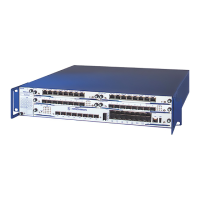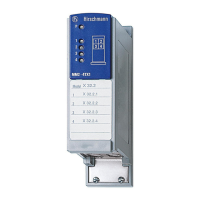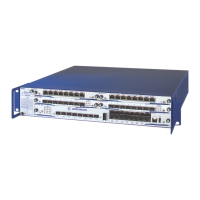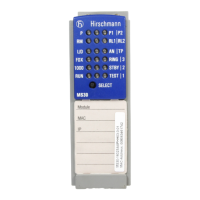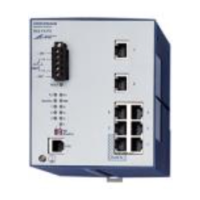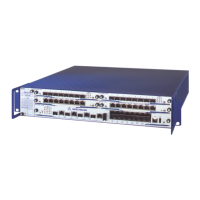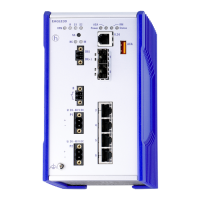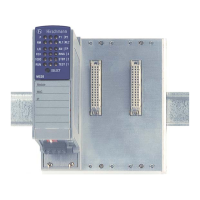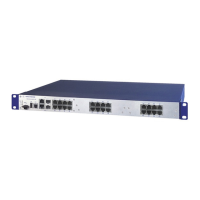Network Load Control
172
8.4
QoS/Priority
UM Basic Configuration L3P
Release
7.1
12/2011
Differentiated Services
The Differentiated Services field in the IP header (see fig. 39) newly
defined in RFC 2474 - often known as the DiffServ code point or DSCP -
replaces the ToS field and is used to mark the individual packets with a
DSCP. Here the packets are divided into different quality classes. The first
3 bits of the DSCP are used to divide the packets into classes. The next
3 bits are used to further divide the classes on the basis of different
criteria. In contrast to the ToS byte, DiffServ uses 6 bits for the division
into classes. This results in up to 64 different service classes.
Figure 39: Differentiated Services field in the IP header
The different DSCP values get the device to employ a different forwarding
behavior, namely Per-Hop Behavior (PHB). PHB classes:
Class Selector (CS0-CS7): For reasons of compatibility to TOS/IP
Precedence
Expedited Forwarding (EF): Premium service.
Reduced delay, jitter + packet loss (RFC 2598)
Bits (0-2): IP Precedence Defined Bits (3-6): Type of Service Defined Bit (7)
111 - Network Control 0000 - [all normal] 0 - Must be zero
110 - Internetwork Control 1000 - [minimize delay]
101 - CRITIC / ECP 0100 - [maximize throughput]
100 - Flash Override 0010 - [maximize reliability]
011 - Flash 0001 - [minimize monetary cost]
010 - Immediate
001 - Priority
000 - Routine
Table 14: ToS field in the IP header
Bits
0
1324567
Currently
Unused
(CU)
Differentiated Services Codepoint
(DSCP) RFC 2474
Class Selector
Codepoints

